Get the Inside Scoop on Maypops (a type of passionflower)!
STORY BEHIND THE NAME
Maypops (Passiflora incarnata) are called maypops for a reason, as the fruit make a popping noise when crushed. Try it out sometime and see for yourself! Other theories on the origin of the name are that the vines generally emerge from the ground in May (very late compared to most other plants) or that the name might have evolved from the Algonquin word “mahcawq” or “maracock”.
Maypop is a specific species native to North America and are part of the passionflower genus, Passiflora. This genus has around 550 species, with the majority compromised of vines, in addition to some shrubs and trees. Maypop is one of the few species that produces an edible fruit in the Passiflora genus. It is also the hardiest of all the passionflowers. It’s pretty neat that the Mid-Atlantic region has its own version of a passionfruit growing wild. The name Passionflower also has a bit of a story behind the name. It was named by Spanish colonists in the Americas, who claimed that the flower reminded them of the passion of christ (the crucifixion). In Israel, Greece, and Japan, the plant is known as ‘clock-flower’ or ‘clock-plant’. It’s clear that the flower brings up many different associations for people all over the world.
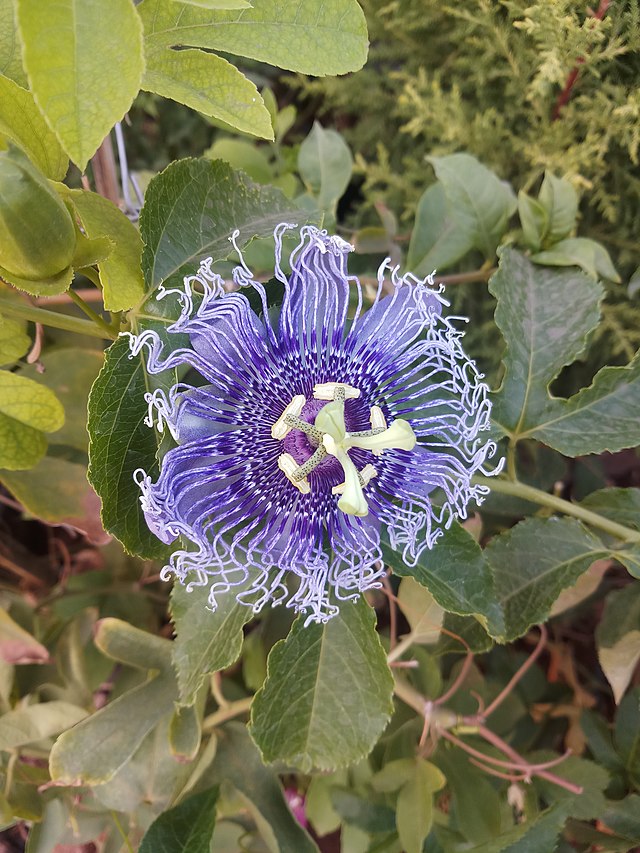
POP had an opportunity to engage with maypops when the staff made a field trip to the Experimental Food Network in Elmer, NJ in 2021 and received some maypop cuttings from Nate Kleinman while visiting. The cuttings were planted outside the fence surrounding the nursery at the Learning Orchard in the Woodlands, POP’s headquarters. We look forward to being able to further propagate these maypops at our nursery and offer them to our orchard partners going forward.
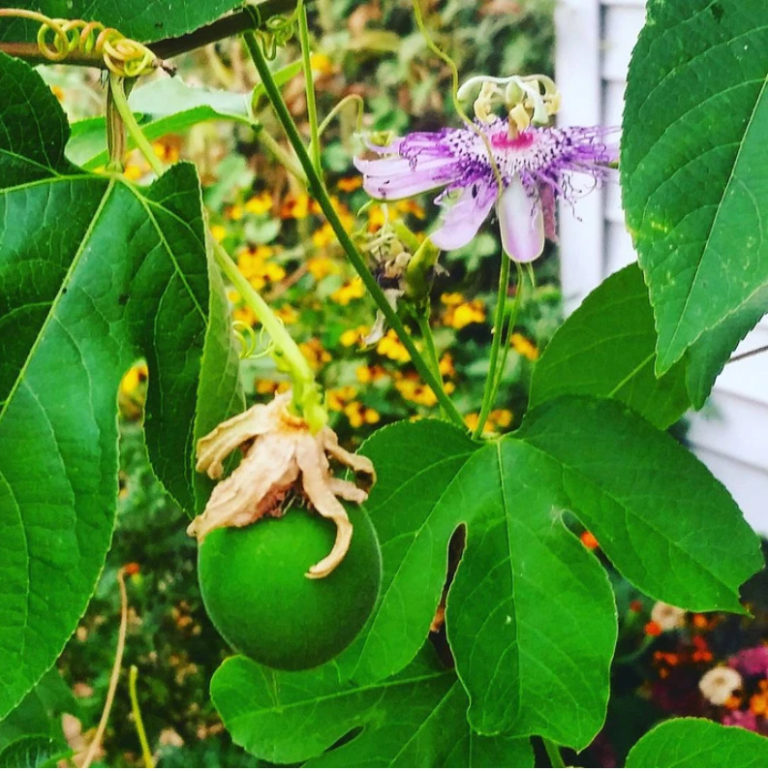
PLANT CHARACTERISTICS
The maypop is a fast-growing vine, with grasping tendrils, spanning up to 25 feet long. The vine is herbaceous (dies back to the ground in winter), with either a smooth or hairy texture, and has 3-lobed, serrated leaves, but it’s the flower that really stands out. Though the flower can vary, the variety of Maypop growing in these parts typically has a purple, fragrant, frilly flower in a flat saucer shape with five petals, thread-like filaments (called a corona), and prominent reproductive organs (stamen and pistil). It is pollinated by bumble bees and carpenter bees and is self-fertile, meaning the pollen is transferred from male reproductive organs to female reproductive organs on same flower or a different flower on the same plants. The flower blooms in July and the edible fruit appears soon after, ripening in the fall. Once July hits, the vines blossom and set fruit for a long time, so one vine can have both young and old fruit at the same time.
THE FRUIT
Please read our disclaimer at the end of this article before consuming any maypops.
To be clear, even though maypops are a type of passionflower, they do not produce passionfruit, which come from another species that grows in a warmer climate, Passiflora edulis. Maypops produce…maypops! The fruit is oblong in shape and roughly the size of a hen’s egg. It starts out green and turns yellow as it ripens and will fall when fully ripe. The fruit is filled with pulp and seeds. An underripe maypops top the charts in sourness. However, when ripe, the seeds are a perfect balance of sweet and sour. Each seed is surrounded by a juicy flesh, similar to pomegranate seeds. The fruit can be eaten out of hand. The seeds and pulp taste good eaten raw. The rind can be eaten raw but is better when its cooked. The juice can be consumed fresh or used in juices, jams, preserves, and flavoring processed foods. Speaking of juices, did you know that Hawaiian Punch is passionfruit flavored? Not exactly maypop flavored, but not far off!
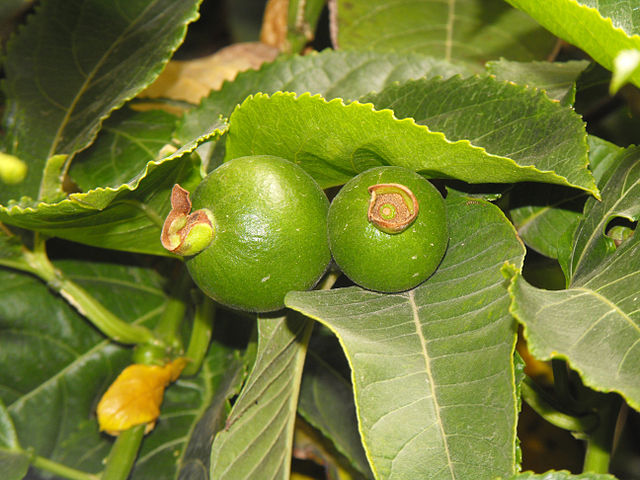
HABITAT
Now that we know how delicious the fruit is, where can we find it? Maypops are typically found growing in sandy soil in thickets, riverbanks, disturbed areas, pastures, and along roadsides. They are hardy from zones 7-11, with Philadelphia being just warm enough for them to survive winters in the ground. In some harsh winters, Maypops will not survive in pots in zone 7. They prefer sunny areas with medium-moisture soils that are well-drained and can tolerate partial shade and drought. Maypop is a voracious grower, as is common with many vining plants, and spread aggressively by underground runners, so be cautious about where they are planted. We recommended planting them in pots or in strips of isolated land surrounded by pavement or mowed grass where it is contained and can’t spread. Though it is native, their aggressive habits can be problematic in some situations. Despite its vigorous growing nature, it can be a beneficial and beautiful plant to have around. Maypops are important host plants for butterflies and important pollinator plants for carpenter bees and bumble bees, so it can boost the ecological activity in a garden. The fruit is also well-liked by wildlife.
CULTIVATION
If trying to grow this plant, it’s unlikely you will have much trouble. Need convincing? In ideal conditions, they can grow up to 20 feet a year! Maypop can be purchased, grown by seed and/or cutting.
To germinate from seed, its best to use them when they are fresh from the fruit. They do not store well and have a shelf-life of one year.
- If using older seeds, to improve germination rate you can take some sandpaper and rub it against the seed and soak in lukewarm water for 24 hours. Throw out any floating seeds.
- Plant 1/4 inch deep into moist potting mix or seed starting mix.
- Plant it in a sunny location with loose, well-drained soil.
- Cover with a lid or ventilated plastic to keep up humidity.
- Once they germinate, take off lid/plastic and place in sunny location and keep soil moist.
To grow from a cutting, use younger stems that are softer and easy to break.
- Cut off 4-6 inch cuttings just below the node.
- Remove lower leaves and tendrils.
- Dip in rooting hormone if you have it.
- Stick cuttings about half an inch into well-draining potting mix.
- Lightly water and then cover with a clear, ventilated plastic bag.
- Place them in a shady location and keep them warm and moist.
- Once you notice new growth (typically in a month or so), you can move them to their permanent locations.
Maypops spread prolifically by undeground runners, so you can also just dig up rampant sprouts and pot them up with their roots. Cut back some of the top growth to give them the best chance.
Once you have your maypop plant in its permanent location, preferably in a sunny location, you can place mulch around the roots to keep them cool. Grow them against a trellis or arbor to accommodate their climbing nature, but unlike most passionflowers, they will still bloom even if they aren’t climbing vertically.
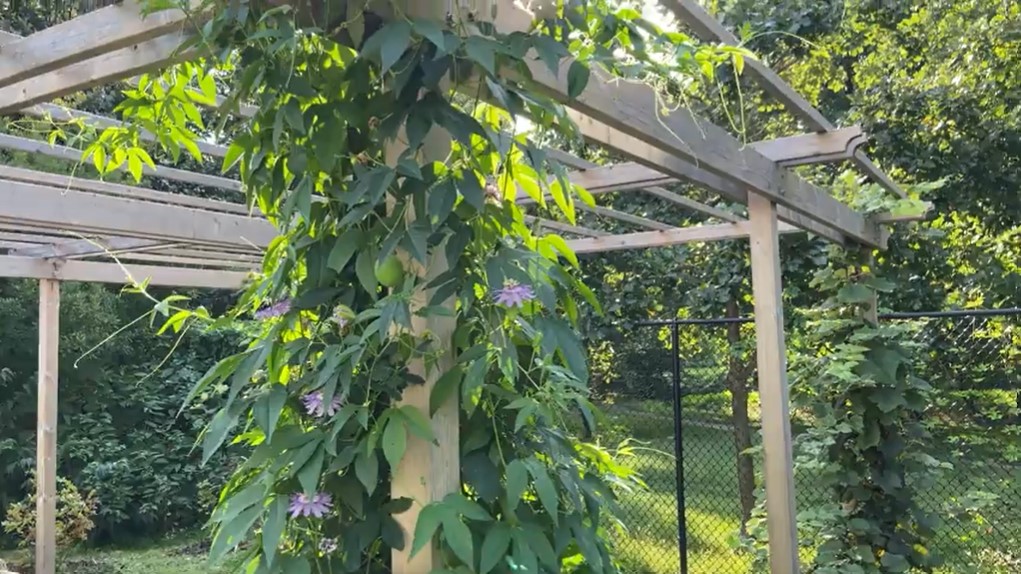
MEDICINAL QUALITIES
Please read our disclaimer at the end of this article before consuming any maypops.
Maypop has a long history of use in North America as a sedating and calming herb. The leaves and flowers can supposedly be used to soothe anxiety and promote more restful sleep. Herbalists also claim that it can help with attention deficit hyperactivity disorder, insomnia, and inflammation. It is full of antioxidants and is considered to be anti-inflammatory. It can typically be found in tea form, infusion form, capsule form, and tincture form. They are also traditionally used topically as poultices to help heal cuts and bruises.
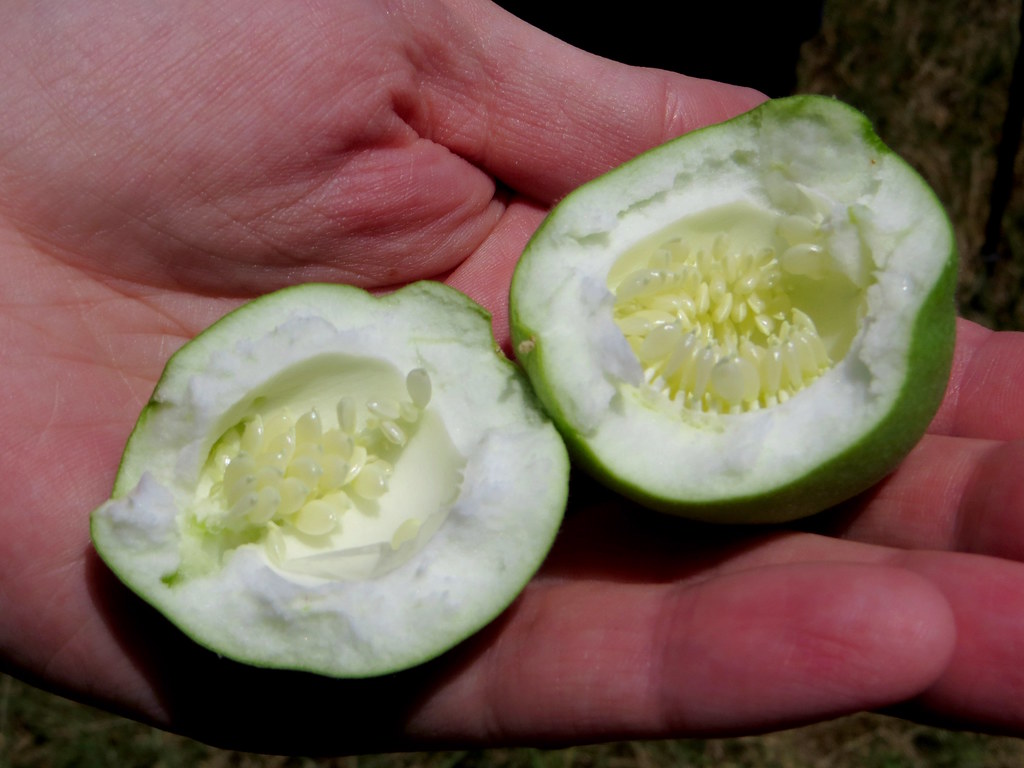
MAYPOP RECIPES
Maypop Jelly
2 cups ripe maypops
1 cup water
2.5 cups sugar
1.75 ounces pectin
Combine maypops and water. Bring water to a boil and boil gently for 5 minutes. Then strain, discarding the pulp. Combine liquid and sugar and bring to a full boil. Add pectin and again, bring to a full boil. Remove from heat, pour into sterilized jars, and seal. Makes 2.5 pints.
Maypop Vinaigrette
1 cup maypop pulp
2 tbsp. honey
2-3 tbsp, white vinegar
0.5 cup extra virgin olive oil
Salt and freshly ground white pepper
Combine all ingredients in a blender. Blend until smooth and emulsified. Add salt and pepper, to taste. Use right away or store in fridge for up to a week. Makes 1.5 cups.
DISCLAIMER
The information presented on this website is for informational, reference, and educational purposes only and should not be interpreted as a substitute for diagnosis and treatment by a health care professional. Always consult a healthcare professional or medical doctor when suffering from any health ailment, disease, illness, or injury, or before attempting any traditional or folk remedies. Keep all plants away from children. As with any natural product, they can be toxic if misused.
The Philadelphia Orchard Project stresses that you should not consume parts of any wild edible plants, herbs, weeds, trees, or bushes until you have verified with your health professional that they are safe for you. As with any new foods that you wish to try, it is best to introduce them slowly into your diet in small amounts.
This POP Blog was written by Orchard Assistant Simone Shemshedini.
SUPPORT US! If you found this entry useful, informative, or inspiring, please consider a donation of any size to help POP in planting and supporting community orchards in Philadelphia: phillyorchards.org/donate.
SOURCES
https://edibleupcountry.ediblecommunities.com/recipes/maypop-vinaigrette